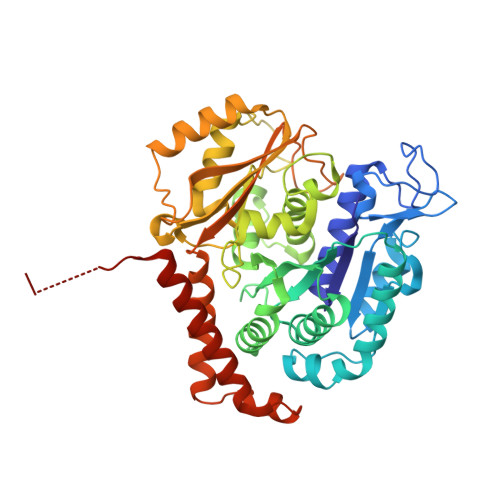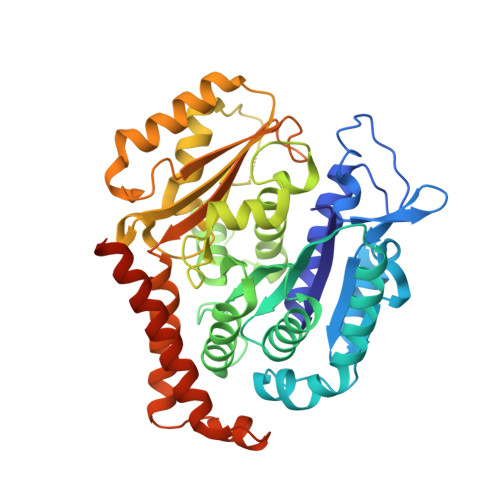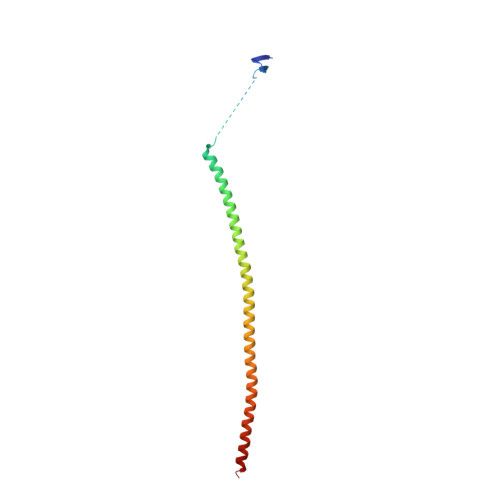High-resolution X-ray structure of three microtubule-stabilizing agents in complex with tubulin provide a rationale for drug design.
Xiao, Q., Xue, T., Shuai, W., Wu, C., Zhang, Z., Zhang, T., Zeng, S., Sun, B., Wang, Y.(2021) Biochem Biophys Res Commun 534: 330-336
- PubMed: 33272565
- DOI: https://doi.org/10.1016/j.bbrc.2020.11.082
- Primary Citation of Related Structures:
7DAD, 7DAE, 7DAF - PubMed Abstract:
Microtubule is a key component of cytoskeleton and has been considered as an important target for the treatment of cancer. In particular, the tubulin taxane-site inhibitors such as taxol analogs and epothilones have achieved great success in clinical trials. However, the structural basis of many taxane-site inhibitors is still lacking in exploring their mechanism of action. We here reported crystal complex structures for three taxane-site inhibitors, Ixabepilone, Epothilone B, and Epothilone D, which were determined to 2.4 Å, 2.4 Å, and 2.85 Å, respectively. The crystal structures revealed that these taxane-site inhibitors possess similar binding modes to that of Epothilone A at the taxane site, e.g. making critical hydrogen-bonding interactions with multiple residues on the M-loop, which facilitating the tubulin polymerization. Furthermore, we summarized the binding modes of almost all taxane-site inhibitors and identified novel taxane-site ligands with simpler chemical structures through virtual screening. On this basis, new derivatives with higher binding affinity to tubulin were designed and developed, which can form additional hydrogen bond interactions with tubulin. Overall, this work determined the mechanism of action of epothilones and provided a structural basis to design reasonably novel taxane-site inhibitors with simpler structure and improved pharmacokinetic properties.
Organizational Affiliation:
Cancer Center, West China Hospital, Sichuan University, And Collaborative Innovation Center of Biotherapy, Chengdu, 610041, People's Republic of China. Electronic address: 659096188@qq.com.

























